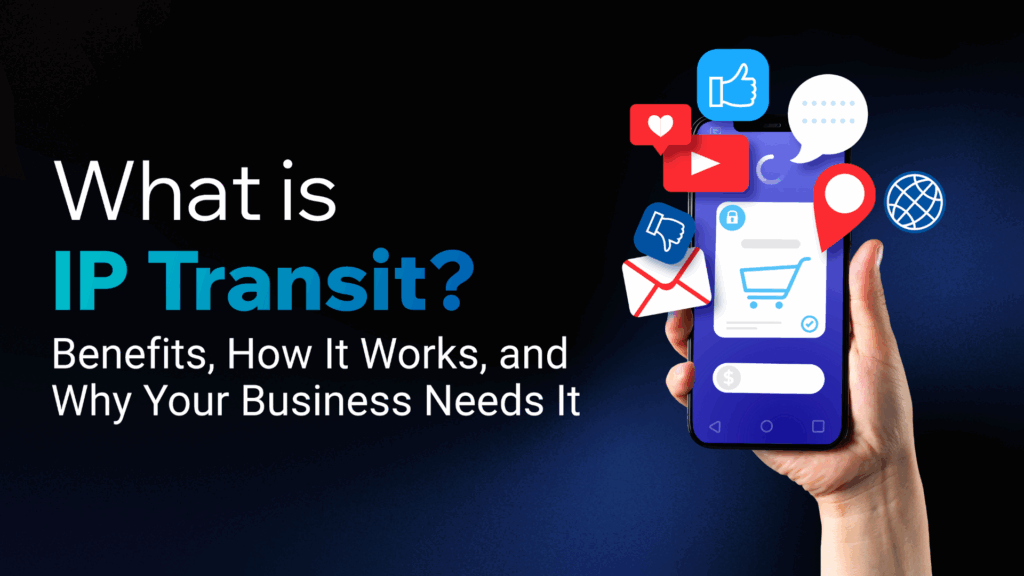
The internet may seem seamless, but behind every connection lies a complex web of networks. For businesses that require fast, reliable, and global internet access, IP Transit is a key solution. Acting as a gateway to the global internet backbone, IP Transit ensures that your business traffic can reach anywhere in the world with speed and efficiency. But what exactly is IP Transit, how does it work, and why is it so critical for modern enterprises?
What is IP Transit?
IP Transit is a service where an Internet Service Provider (ISP) allows another network (usually enterprises, smaller ISPs, data centers, or hosting providers) to connect to the global internet using its backbone infrastructure.
In simple terms, IP Transit gives you access to the entire internet routing table, not just one network. It enables your business to send and receive data globally without relying solely on local ISPs.
How Does IP Transit Work?
IP Transit works through Border Gateway Protocol (BGP) — the routing system that tells networks how to reach each other.
- Your business connects to an upstream provider (Tier 1 or Tier 2 ISP).
- The provider uses BGP to advertise and exchange routes between your network and the rest of the world.
- As a result, your traffic can reach any IP address globally, with optimized routing and redundancy.
This makes IP Transit the backbone of international internet connectivity.
Key Benefits of IP Transit
1. Global Reach
With IP Transit, your business doesn’t just connect to one provider — you gain access to the entire internet, reaching customers, partners, and cloud services worldwide.
2. High Reliability and Redundancy
Leading IP Transit providers offer multiple redundant paths to ensure uptime and stability. This minimizes the risk of outages and ensures consistent performance.
3. Scalability
Bandwidth can easily be scaled up as your business grows. Whether you need 100 Mbps or 100 Gbps, IP Transit adapts to demand.
4. Optimized Latency
Through intelligent routing and peering agreements, IP Transit providers ensure faster connections with reduced latency — essential for applications like VoIP, video conferencing, and cloud services.
5. Cost-Efficiency for ISPs and Enterprises
Instead of building your own global network, IP Transit lets you leverage existing infrastructure at a fraction of the cost.
Why Businesses Need IP Transit
🌍 Global Enterprises
Multinational companies need reliable internet across regions. IP Transit ensures seamless communication between global offices, data centers, and cloud platforms.
🏦 Financial Services
Banks and trading firms require low-latency connections for real-time transactions and data security.
☁️ Cloud and SaaS Providers
Businesses offering cloud services rely on IP Transit to deliver content to global users with speed and stability.
🎮 Gaming and OTT Platforms
High-performance IP Transit ensures smooth gameplay, video streaming, and content delivery worldwide.
📡 Telecoms and ISPs
Smaller ISPs purchase IP Transit from Tier-1 providers to give their customers access to the global internet.
Conclusion
IP Transit is more than just an internet connection — it’s the gateway to global connectivity. By providing scalability, redundancy, and optimized performance, IP Transit empowers businesses to deliver reliable services to users worldwide.
Whether you’re an enterprise expanding globally, a data center operator, or an ISP, IP Transit ensures your business stays connected at the speed of the internet backbone.
